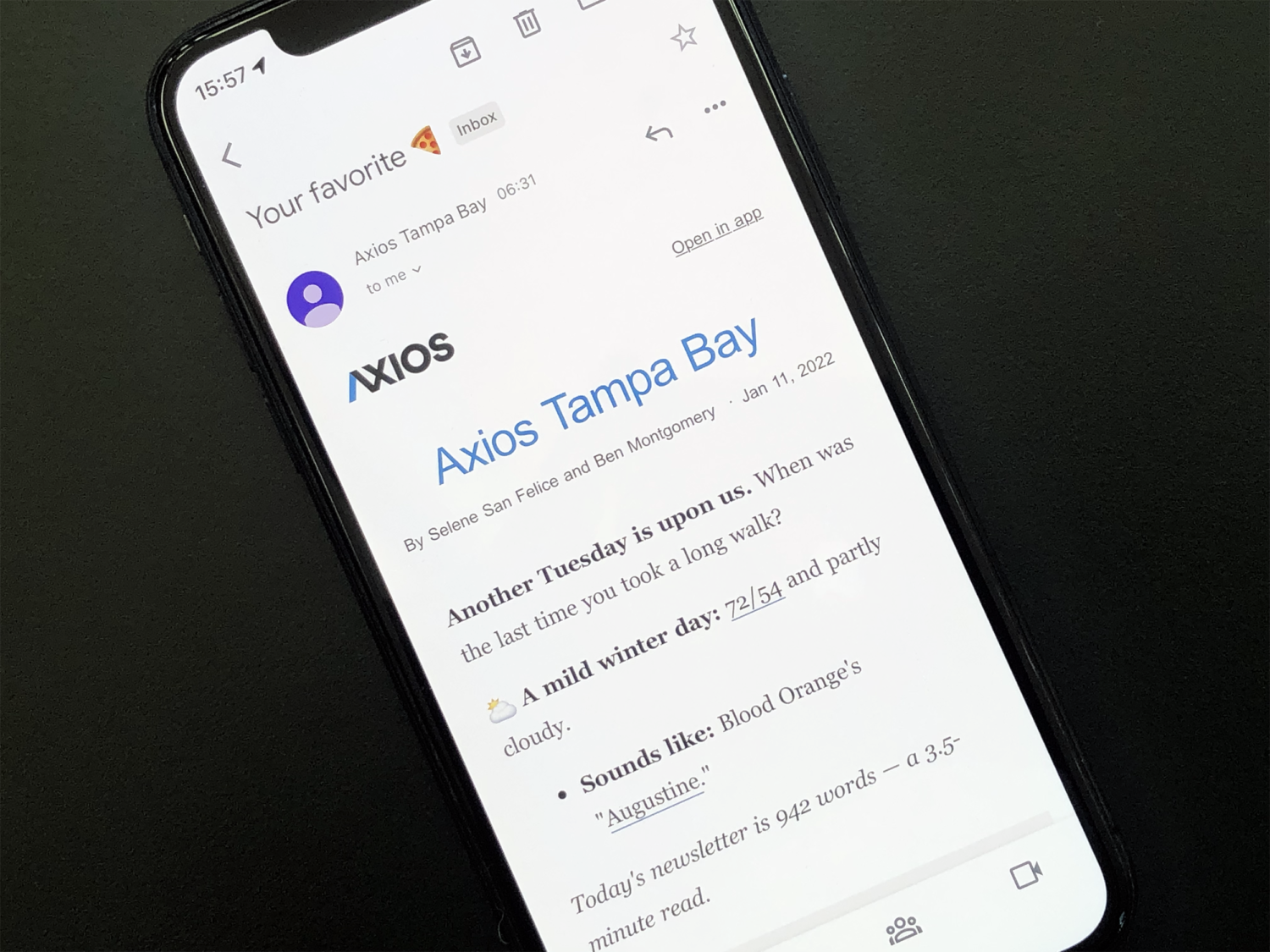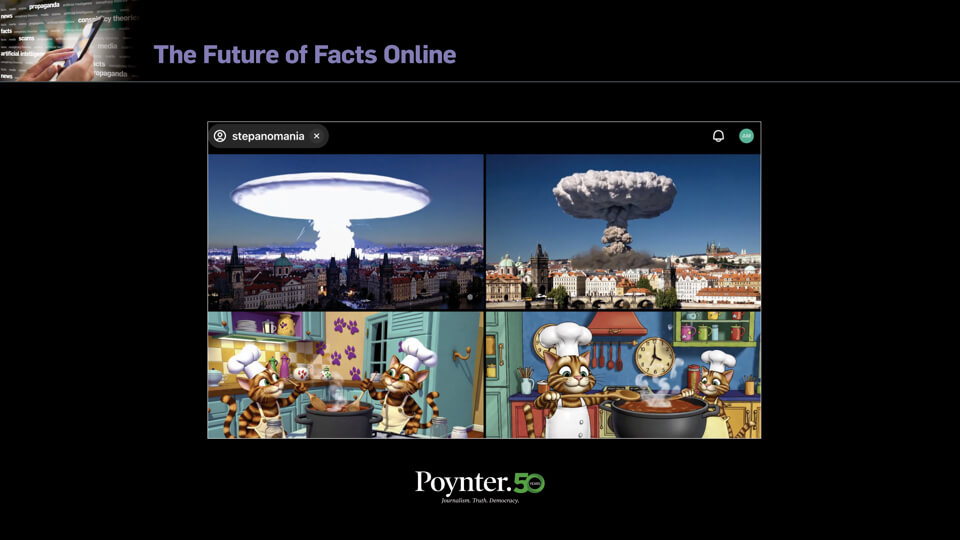There was more than a hint of the grandiose in Axios CEO Jim VandeHei’s “manifesto” announcement of the latest expansion of Axios’ year-old morning newsletter franchise. He wrote:
“We want to bring smart, modern, trustworthy local news to every community in America. … Everyone needs — and deserves — high-quality reporting to understand the changes unfolding fast where they live. Axios Local is the solution, elegantly delivered to your smartphone.”
VandeHei conceded that some might say, “This sounds insanely ambitious (or just insane). But you don’t solve gigantic societal and business problems by thinking small.”
Savior or not, after talking last week with the two men overseeing Axios Local’s expansion, I was persuaded that the product and plan are solidly grounded.
In fact, Axios Local looks to be a classic case of what business scholar Clayton Christensen called a “good enough” disruptive business product that should worry any incumbent. In this case, that’s metro newspapers and their websites.
In its 14 markets, so far all mid-sized to big metros, with 11 more to follow in the next months, Axios Local publishes a quick-read, five-day-a-week, morning newsletter — all you need to get yourself started before going to work.
For a targeted young professional audience, many of them casual local news consumers, that may be all they need, period.
Ted Williams, the group’s general manager, invented the template six years ago with his Charlotte Agenda. As part of the local rollout, Axios bought Charlotte Agenda for $5 million, renamed it Axios Charlotte and charged Williams with cloning it, starting with four more cities.
The format was a tidy match with Axios’ compact bullet-point format for both stories and newsletters, where “smart brevity” is its copyrighted slogan.
No doubt Axios Local constitutes a big play for parent Axios. Its editorial staff of 42 already makes up roughly a quarter of the company’s total of 150. Plus there are 32 more positions being advertised in this year’s expansion.
Williams’ formula, conceived while he worked at The Charlotte Observer before he went out on his own, is straightforward. It’s a morning newsletter with five or so items — many of them aggregated, a few reported — free and supported each day by a lead sponsor/advertiser. A large health care system was Charlotte Agenda’s initial sole sponsor and remains one for Axios Charlotte.
“It’s digital brand advertising,” Williams said in a phone interview, like “the boards you would see on a professional baseball team wall.”
That’s distinct from the sea of digital ads aimed at selling products directly or accumulating lists of prospects. “Facebook and Google do that really well, he said. “We don’t want to compete in that space.”
Nicholas Johnston carries the title of Axios publisher and also oversees a new group of paid professional newsletters, but he is mainly focused on the sites’ editorial content and rapid hiring. “I was employee No. 5,” he told me, coming from Bloomberg and serving as founding editor-in-chief before taking on the new role in September 2021.
Johnston speaks fast, as befits the company’s quick take formats. “People get the brevity,” he said, but they sometimes overlook “the smart part, which is more important.” Axios Local looks for locally based journalists — “some of them may have grown up there” — who can aggregate what’s important as well as break news.
That suggests raiding the staff of incumbent metros with the lure of high salaries as The Athletic famously has done. I asked Johnston if he would confirm that the senior of the typically two-person team often make six figures.
“Talk it up,” he replied. “Absolutely. We want a top caliber of journalist, and you have to pay for that.”
As for content, “one of the things we learned from Ted is the importance of smart lifestyle content.” So along with short summaries of news stories of the day, he said, there might be “fun stuff like the five best chicken sandwiches in Des Moines.”
Williams didn’t invent short newsletters, but I have noticed that they seem to be ubiquitous now among newspapers — well-selected content for a quick overview along with links to go deeper. The Chicago Tribune’s Daywatch, with the magic number of five items, has been a favorite of mine.
There’s a difference, though, Johnston notes. Metro paper newsletters direct you back to their own stories and double as a subscription pitch, he said, while the Axios Locals draw on a variety of sources — business journals, broadcast outlets, etc.
Axios’s home office in Arlington, Virginia, provides tech and back-office support and what Johnston called “a distinctive visual style” — heavy with graphics and illustrations.
Plus a visit to any Axios site will trigger an offer to sign up for an Axios Local newsletter if you are in a city they serve. With that booster, Axios claims 600,000 subscribers after its first year.
Some of the stories are spun off from Axios’ national stories and a bank of news databases.
As for investigations and other longer-form stories, Johnston told me, Axios Local is doing some now and ramping up to more later. In company parlance, a big story — like a 2020 exposé of a Chinese spy in California — typically appears as a “site takeover” for a day, supplanting the usual diet of short items.
As a reader of Axios Tampa Bay, I have noted many development and real estate stories. Monday morning’s edition led with a story of a luxury home purchased for $3.8 million and relisted a month later for $9.5 million. Some have been calling such coverage real estate porn, and Johnston wants to avoid that trap. Affordability and inequality are rising topics at a number of the sites, he told me, and Charlotte has a beat reporter focused.
Is Axios out to eat the lunch of metro newspapers? That’s a sensitive topic. On one hand, Johnston says, his small staff, even working at warp speed, cannot match the breadth of the newspaper. He will settle for being a valued part of a local news ecosystem.
Like most all-digital operators though, Johnston thinks newspapers continue to be dragged down by the expenses of printing, paper and delivery. And he cannot resist the occasional competitive dig. “Are there any more dreaded words than ‘first in an eight-part series?’” Johnston said. “We’re not trying to signal importance to the prize committee” with length.
So even for its reported stories, concision is the goal. “We have a sign in our newsroom that says, ‘Have the courage to take your fingers off the keyboard,’” he told me.
Profitability is at least another year off, Williams said, but Axios Local booked a respectable $5 million in revenue in its first year.
A pleasant surprise, he said, has been a job board, generating $300,000 in Charlotte alone last year and now appearing on the other sites. Here too, Williams said, the goal is not to displace the big guys like LinkedIn and Indeed, but to offer targeting to a given city’s young professionals.
Axios had revenues of $58 million in 2020 and carried a valuation of $200 million, according to a 2020 Wall Street Journal story. The company declined to update those figures or say whether a new round of financing was required to get Axios Local off the ground.
VandeHei’s manifesto includes the familiar map of news deserts. On close inspection, however, he makes no claim to currently be serving communities without newspapers (and invites “philanthropists” to send him good ideas of how that might be done).
Axios Local’s first 25 markets are mostly the biggest of metros, including many (Boston, Minneapolis and others) that are served by the best of newspapers. A smaller exception is Northwest Arkansas, encompassing Walmart’s hometown of Bentonville and some nearby cities.
Johnston and Williams both told me the big cities were the logical place to start for proof of concept and for fine-tuning various elements of the business and editorial formula.
Still, it is not clear to me how the concept will translate to mid-sized markets like Spokane or Chattanooga — let alone out-of-the-way rural places now abandoned by failed weeklies.
The most mature of the newsletter in Charlotte has a news staff of seven and a subscriber list of 107,000. I’m not sure, though, that even staffed-up Axios newsletters will constitute a solution to local news needs.
I wouldn’t necessarily bet against VandeHei and the Axios Local team, though.
It looked like a stretch when he and a partner broke away from The Washington Post in 2007 to launch Politico. Same when he and a different partner broke away from Politico to start Axios in 2016. I watched Wikipedia in the early aughts (born here in St. Petersburg, Florida, where founder Jimmy Wales lived then) and it looked to be, in VandeHei’s phrase “insanely ambitious or just insane.” Turns out it wasn’t.







